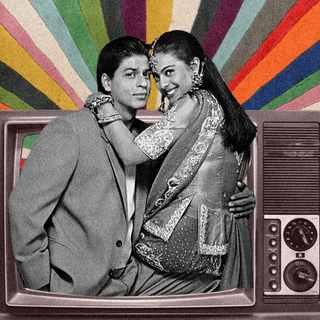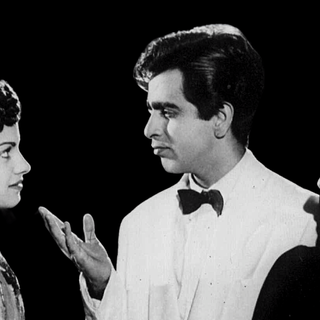
The French Open 2022 Renews Demand for Night Matches for Women in Sports
The argument that women’s sport doesn’t generate as much money as men’s sport misses the point: women’s mobility is socially restricted.

The recently concluded French Open, held in the Stade Roland Garros complex in Paris, unpacks deeper questions about match scheduling and who gets to take the prime spot of cheers, fanfare, and attention. Out of the 10 matches scheduled at night, only one of them was a women’s tennis match: the Frenchwoman Alizé Cornet’s victory over Jelena Ostapenko from Latvia. This led to whispers about the sexism pervasive in the sports industry, which was countered by the French Open chief Amelie Mauresmo last week, whosaid it’s because men’s tennis has more “appeal” at the moment; that it remained difficult to find enough high-profile star players among women to draw the spotlight.
Night matches are the prime time spot in every sporting event, and this is where the business part of sport comes in. The cycle is simple: television pays money to have matches late, the viewership will depend on the fame of the said celebrity athlete, and thus the tournament will make more money accordingly.
“In this era that we are in right now,” Mauresmo said, “and as a woman, a former woman’s player, I don’t feel bad or unfair saying that – you have more attraction, appeal (in) general, for the men’s matches.” Mauresmo is not wrong: a match with two male players in public consciousness typically carries much more glam, glitz, and fervor as opposed to others.
But this question of viewership presents a catch-22 situation. It is similar to an age-old argument against equal pay for women in sports, one that has also been sufficiently debunked. “Women’s sport doesn’t generate as much money as men’s sport,” the critique goes, and thus is lessworthy of time in the sun. But any conversation about money generation has to understand the fabric of fan culture, how it is built, and on what social grounds.
“Fandom for men’s sport is organic,” Liesl Goecker pointed out in The Swaddle. “Sport has always been considered an appropriate, even an epitomizing, activity and interest for men. Sure, there are problems with this (for instance, men with less interest in sport being made to feel less manly), but the one positive is that as men’s sport formalized into professional and international phenomena, fandom was in-built — therefore, automatic, assured ROI.” This creates a setup where the social fandom leans heavily towards the established domain of male sports.
When it comes to women in sports, the fandom is currently in making and requires more deliberate support. This is a field that has been deemed inappropriate for women time and again: perhaps because of presumed incompetence, or because of unflinching loyalty to gender norms. LinkedIn pundits have gone as far as to advise women to brush up their knowledge of male sports as a cut-short way to ensure professional success as well as social inclusion.
Related on The Swaddle:
All The Arguments You Need: to Advocate for Equal Pay in Sport
When we also speak of “appeal” regarding a male sport, we forget how this appeal is created too. Women’s access and mobility to sports are restricted on several accounts — not least due to the fear of safety which comes with traveling late at night. Other hindrances include limited access to mobile phones and the internet to stream these matches; less likelihood of getting to control the TV remote; and even outright legal barriers. If women are not watching female sports — not due to their lack of interest, but due to systemic barriers — then the value is never manufactured in the first place. This is a self-fulfilling prophecy if there ever was one: when fewer women have access to sports, their interest in women’s sports declines, further reducing the likelihood of them becoming professional athletes, removing fans and commercial ads and revenue from the picture. The end result is a systemic devaluing of female sports, without realizing the social fissures every sporting arena is built on.
“Therefore, while establishing a profitable fanbase for women’s sport is hardly impossible, it can’t possibly be purely organic, as is the case for men’s sport,” Goecker added. “It will take actual investment in order to see a non-guaranteed return. It takes risk — and that’s not the fault of individual women athletes or their teams; it’s the fault of society. So, why are we punishing these women with unequal pay?”
Tennis Hall of Famer and equal rights advocate Billie Jean King concurs with this. On Sunday, she said at a press conference: “You’ve got to put them when it’s prime time, and you have got to figure it out, and you want to give equal opportunity to both genders. Always. You always want to make sure you do the right thing by each person.” At least equality in the way viewership is distributed is a move towards fairness — a social investment of sorts. “It will stay that way if we don’t have more matches, that’s for sure,” King said.
Arguably, the tide has been against night matches as a format of competition for some time now. There was a recent flare-up last week, when a fierce match between legends Rafael Nadal and Novak Djokovic started later than usual at 9 pm (as opposed to around 7:30 pm) and ended four hours later. The court is a sacred space where trained and talented athletes display their craft; but outside the arena, there are logistical challenges to be faced. There is the unavailability of public transport at the end of the matches, they disrupt players’ schedules with respect to training and recovery, and even the temperatures (that drop below 15°C) are notconducive to competition. According to one 2015 study that looked at elite soccer players, night matches amounted to major sleep debt. Moreover, post–match routines — including medical care, meals, interviews, and travel — may potentially lead to a delayed (and very late) bedtime. A 2013 study also took stock of the impact these late kick-offs take: “…though matches are expected to cause increased strain on players, factors that prolong or result in inadequate post-match recovery can potentially induce greater symptoms of fatigue and reduced performance.” Night matches then signal how tennis, and sports in general, is littered with disruptive schedules.
The business of sports demands viewership, ticket sales, merchandise, ad buys, and all sorts of other necessities. In the process, however, male sports is put in service of prime-time slots, and female sports is outrightly ignored. Broadcasting interests and profit motives end up fuelling gender disparity — to everyone’s detriment.
Saumya Kalia is an Associate Editor at The Swaddle. Her journalism and writing explore issues of social justice, digital sub-cultures, media ecosystem, literature, and memory as they cut across socio-cultural periods. You can reach her at @Saumya_Kalia.
Related


Woe Is Me! “All My Friends Are Coupled! How Do I Not Feel Like a Third Wheel?”
